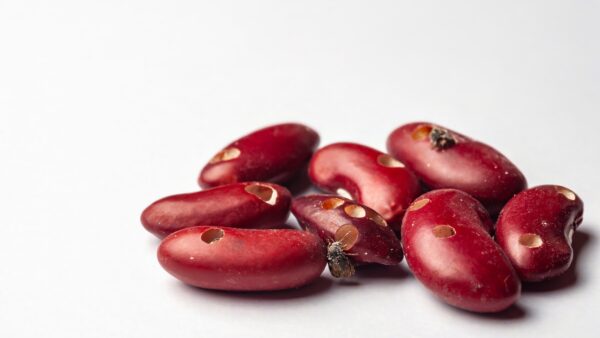For researchers and plant breeders to take advantage of the latest plant breeding methods, they need reassurance that their product will be accepted by consumers and that it won’t interrupt international grain trade. Industry leaders hope that by developing a set of criteria for governments around the world to adopt, international markets will align.
Leaders recognized early on that if plant breeders were going to have access to the latest innovations and methods, they had to take the lessons they learned from the 80s and 90s with GM technology and apply them today.
Due to the regulation and the costs associated with bringing a GM product to market (eight years and an estimated $135 million), public plant breeders have been priced out of the market, and that’s true for smaller developers as well.
Another lesson learned is around policy. Bernice Slutsky, who co-chairs the International Seed Federation’s (ISF) Plant Breeding Innovation Working Group, says that for GM products, countries set up special pre-market approval processes for products of genetic modification.
“We are asking, ‘when is it justified to include a product under these GM regulations?’ Most new plant varieties are regulated around the world,” she explains. “It’s not a question of whether they should be regulated, or should they not be regulated, but should they be subject to the same special pre-market approvals that were set up for GM.”
But Slutsky cautions this isn’t just about gene editing or another technology. “This is about the seed industry and agriculture’s ability to innovate,” she says. “If we always go back to GM as the dampening point, that is a huge hindrance to the industry.”
Therefore, ISF and its members have been working proactively to take the lad on this issue, shares Secretary General Michael Keller.
Laying the Groundwork
“When we first initiated our efforts in this area two years ago, ISF had to clarify its role and focus via the working group,” says Keller. Consequently, three key objectives were identified:
1. To facilitate policies across countries that don’t impede, but rather enable the adoption of new technologies and foster harmonized regulations across countries.
2. To communicate with ISF members and other parts of the value chain.
3. To create alliances with stakeholders, public plant breeders and research institutes.
When the working group started, members focused first on policy. “That’s where we felt the core of it was, and we also knew that our policy efforts would take the longest and generate the most work,” Slutsky says.
The working group started by hosting off-the-record meetings, designed as an information exchange, with individuals from key countries. Slutsky says these were people who often wouldn’t meet to discuss the issue, but they were asked: “What could be done to facilitate consistent science-based policies across countries?” This led to some very good discussions, Slutsky says.
From there, the Plant Breeding Innovation Working Group developed a concept paper to foster discussion and serve as a road map for national seed associations and ISF members when working with governments and stakeholders. The paper provides a detailed background on plant breeding and the tools and technologies available today.
“Essentially, if you can reach the same product endpoint with traditional plant breeding as with the new technologies, then we believe they should be governed the same as products derived from traditional breeding,” Slutsky summarizes.
The paper, which has been translated into Chinese, Korean, French and Spanish, with more languages to come, outlines criteria to help governments determine if products should fall within the GM regulatory framework, or out of the GM regulatory framework.
“Our hope is that if governments follow the criteria provided, there will be consistency among countries,” she says.
Meanwhile, the communications subgroup of the Plant Breeding Innovation Working Group has been developing a communication toolkit, currently comprising infographics, presentations and a complete discussion guide on how to talk about the topic.
“These tools are designed to support our national and regional seed associations in their communications with their public stakeholders, policymakers and members,” explains Jennifer Clowes, ISF communications manager, who is coordinating this project.
The Road Ahead
But the Plant Breeding Innovation Working Group isn’t done. There’s still a lot of road ahead. The communications subgroup will be developing a frequently asked questions document based on the most common questions asked throughout the process.
The primary working group will expand its reach by reaching out to more countries to get input and collect feedback.
Additionally, the working group will begin talking about the importance of plant breeding innovation as part of other international meetings. These include the Food and Agriculture Organization of the United Nations (FAO), Organisation for Economic Co-operation and Development (OECD) and the Asia-Pacific economic community.
“These are places where governments are already meeting,” Slutsky says. “We are trying to get on the agendas to talk about the concept paper and discuss the importance of plant breeding innovation. In some cases, we’ll even look to host a side event.”
FAO hosted a meeting on agricultural innovation, while OECD convened in Canada on gene editing, and the Asia-Pacific Economic Cooperation held a two-day workshop last June on plant breeding and the use of gene editing.
Now ISF is encouraging its members to start communicating with their governments and to proactively engage in conversations with their partners and downstream stakeholders in the value chain.
“It’s important that our conversations don’t just focus on the technology of gene editing,” Keller says. “In fact, gene editing wouldn’t be useful at all if we didn’t have the accumulation of knowledge such as genome mapping, marker-assisted selection and many others.
“Rather, this technology allows breeders to use that cumulative knowledge. Gene editing is one tool of many that breeders can use. We are not going to feed the world because of gene editing, but because plant breeders have access to all the tools available.”
Drive for Consistency
Consistent policies are not only important for seed trade, but also other parts of the value chain, particularly commodities and the grain trade, both of which depend on uninterrupted trade.
“We are all familiar with the issues of asynchronous approvals,” Slutsky points out. “From that perspective, we have to work with downstream partners on the end goal, as farmers want an array of technologies available. ”
But farmers need reassurance that they will have a market for their product. “From a grain trade perspective, consistency is most important,” Slutsky says. “They don’t want inconsistent government policies that hinder their ability to sell their product. The other half of the equation is innovation.”
But consistency isn’t the only criteria important to the seed industry. “The important piece is that the policies put in place shouldn’t be unnecessarily burdensome, and they should foster innovation,” she says.
Adrian Percy, global head of research and development for Bayer, says he favors a harmonized regulatory system. “Of course, it has to be a reasonable regulatory system that encourages innovation and one that allows us to support sustainable agriculture,” he says.
Global Oversight
With so much at stake and the importance of plant breeding innovations to agriculture’s ability to provide the feed, food, fiber and fuel needed in a sustainable way, researchers need access to all the tools in their toolbox.
“We hope to reach an endpoint such that we don’t have policies or processes across governments that impede commodity trade, research collaboration or seed movement,” Slutsky says.
The next year-to-two are going to be pivotal, Keller notes.
“Governments are actively discussing this topic, and it’s been in the press a great deal,” he says. “We need to stay ahead of the curve.
“Our focus is clearly plant breeding innovation. It’s the No. 1 priority for the entire industry ‚Äî all players and all crops. It affects everyone.”













